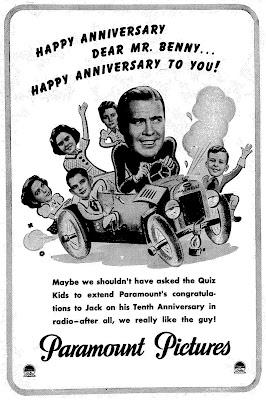Warner Bros. managed to get some mild humour from making fun of familiar names of celebrities, reading material and stuff you could buy at the store. Friz Freleng’s
September in the Rain (1937) is one of those cartoons, you know, where stuff comes alive when humans aren’t around.
Let’s head to the grocery store and see what we can recognise.

Do people still put blueing in clothes? Writer Tedd Pierce doesn’t seem to have had a particular blueing product in mind here. Akst and Clarke’s
Am I Blue? is heard in the scene.

Old Dutch Cleanser. The most creative thing in this gag is Carl Stalling working the Dubin-Warren tune
’Cause My Baby Says It’s So into a Dutch clog dance tempo.



Cigarettes galore. Camel, Domino, Tareyton, Lucky Strike. Tareytons were made by the American Tobacco Co. but Tareytowns are from the fine people at the Hoboken Tobacco Co. Tareyton’s motto “There’s something about them you’ll like” has been parodied on the pack. There’s also a Park Avenue cigarettes with an ersatz coat of arms in this cartoon. I don’t get the reference. Pall Mall maybe?

Bon Ami cleanser has a little chick on the label, too. The proud little worm is inching along to
In the Shade of the Old Apple Tree.



Note the phoney Shreaded Wheat and Uneeda Biscuits boxes have a faked version of the Nabisco symbol (the oval with the double cross on top). The girl with the umbrella singing
By a Waterfall could be found on cans of Morton Salt. The gag was used earlier in the Freleng cartoon
How Do I Know It’s Sunday.

Ah, what’s a Warners cartoon without Al Jolson in blackface? His Cream of Wheat box kind of has the Good Housekeeping Seal of Approval on the side. Blackface doesn’t have the seal of approval these days, so Jolie, Aunt Jemima and the energetic Gold Dust twins and Fats Waller caricatures (doing a pretty swinging version of Warren and Dixon’s
Nagasaki) in the cartoon aren’t culturally appropriate these days.

Log Cabin Syrup, a General Foods product. It advertised for a bit on the Jack Benny radio show in the hitchhike spot.
Other songs in this Freleng musical are
You’re the Cure For What Ails Me by Dubin and Warren (during the snake charmer/toothpaste scenes),
The Campbells Are Coming and
My Old Kentucky Home.

























































